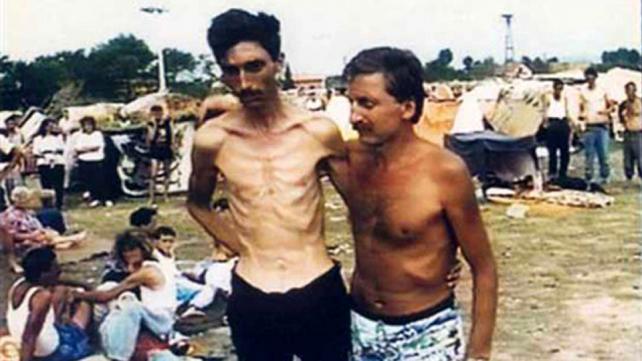
It was the 1984 Winter Olympics which brought us the beauty of Bosnia's capital, Sarajevo. What struck me about this city was not the feats of world-class athletes. Rather, it was the images of a city where there were as many minarets as church steeples. Most Muslims and Christians in the US were probably unaware of this beautiful coexistence of religions in the heart of Europe until then.
The second image is of prisoners detained in Serb-run concentration camps eight years later.
These photographs of grown men, their gaunt faces and their ribs jutting out of their bodies from starvation, woke the world up to the horror of what was happening in Bosnia in 1992. Perhaps it was the similitude of the images to those of the concentration camps half a century earlier in Europe that made many realize that we had forgotten. The difference was that footage from this genocide was in color, not black and white.
Later, we discovered that rape, murder and torture had been happening for six months and the United Nations had known about it. However, the world body decided to keep mum until Newsday journalist Roy Gutman broke the story. He won the 1993 Pulitzer Prize for stories exposing the horrors of the genocide in the former Yugoslavia. His reports led to 6,000 men being freed from Serb-fascists run concentrations camps where they waited to die. Gutman is the author of A Witness to Genocide (1993). May God bless him for helping humanity with the truth.
The third image that continues to haunt me is of women and girls of different ages crying. From magazine, newspaper and television reports, we came to know that more than 50,000 of them had been raped, sexually tortured and kept in rape camps, impregnated and forced to carry "Chetnik" or Serbian fascist babies. Most of them were Bosnian Muslims but some were Christians as well. I still have the image of the raped Bosnian woman featured on the cover of a Newsweek magazine issue in my mind as I write these lines.
As media attention brought the horrors to light, the United Nations could no longer hide its apathy. It declared "safe zones" where Muslims could flee to safety and civilians could not be harmed. The first of these was the town of Srebrenica. It had a population of 9,000. However, because it was designated a safe zone, thousands of terrified Muslims fled there with their families, hoping to save themselves from the horrific rapes, torture and terror, swelling the town's population to 40,000.
But Srebrenica turned out to be a free hunting range than a safe zone. The Dutch soldiers who were supposed to be guarding it on behalf of the UN, handed control of the town over to Ratko Mladic, commander of the Serb army in exchange for 15 of their own soldiers whom the Serbs had taken hostage. At that point, the UN, which had already disarmed the local Bosnians, handed over these defenseless citizens to torture, rape and death. It is estimated that between 8,000 and 15,000 men and boys were slaughtered as they were separated from their families. Women were spared after rapes and robbery but were forced to march to another safe zone in Tuzla. Most killers of Srebrenica massacre are still at large including Mr. Mladic, the general who lead it.
The fourth image that remains of Bosnia was the physical and political similarity of Serbs, Croats and Bosnians. All were Caucasians and their languages were very similar. They were almost all secular, communist or nationalist. The only difference was that culturally, the Bosnians were Muslims, Croats were Catholic Christians and Serbs were Orthodox Christians.
As Communism was falling around the world from Poland to Afghanistan, Bosnians decided to also seek independence so they too could live according to their cultural and political aspirations. Through votes, referendums and elected parliamentary declarations, they announced their freedom and were recognized as an independent state.
As part of their ideology, Bosnians adopted a constitution in which all religious and ethnic groups had equal rights. They wanted to live as a multi-ethnic, secular state with religious freedom for all. But Serb nationalists did not want this to happen. To stop it from happening, they invented something only Hitler and Goebbels would admire: a policy called "ethnic cleansing."
The resulting genocide displaced three million people, about 300,000 were murdered and over 50,000 were raped during the three-years. This was clearly Hitler's policy of "final solution" in action, circa 1992. These facts are recognized now in the recently passed House and Senate resolution (US Senate S.RES.134 on 6/22/2005 & House Resolution H.RES.199 on 6/27/2005)
But the worst part of the Bosnian genocide was not these numbers. The tragedy is the silence of Europe, which watched this happening and did nothing. The UN was born out of World War II so that war and genocide would not happen again. It was this same body which failed to live up to its raison d'etre in Bosnia. The first line of its charter reads:
"We the peoples of the United Nations determined to save succeeding generations from the scourge of war, which twice in our lifetime has brought untold sorrow to mankind,..."
Bosnians were not saved from the scourge of war. Instead, the UN slapped an arms embargo on them so they could not even defend themselves from the onslaught of a well-trained army, which was also one of the world's top arms supplier at the time.
The Muslim world mirrored the UN's inaction. Its 54 states and a body called the Organization of Islamic Conference could do nothing but pass resolution after resolution condemning what was happening.
In the heart of Europe, where only a few decades earlier, Nazis showed the world what extreme nationalism can do, genocide happened again. And once again, Europe looked away. This time, the victims were another religious minority: Muslims.
Today, over a decade after Bosnia, the world has still not learned and it has once again forgotten.
The Rwandan genocide came on the heels of Bosnia, where Christians were killing Christians in the name of tribal nationalism.
And we remained silent.
Photo Attribution: http://commons.wikimedia.org/wiki/File:Trnopolje_Camp.jpg

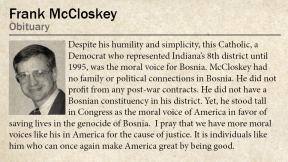
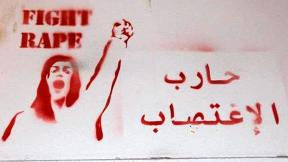
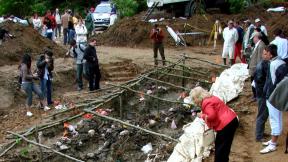
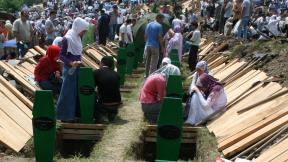
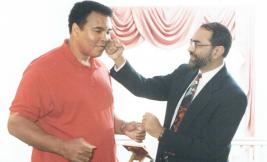


Add new comment